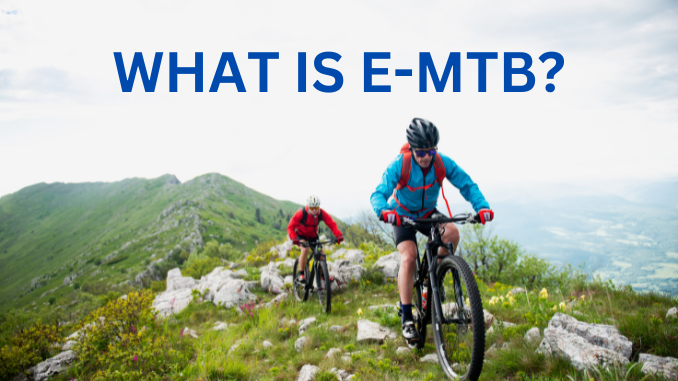
Please note: As an Amazon Associate we earn from qualifying purchases. Details here.
Hey bike enthusiasts, David here.
Usually my wife writes content for our website, but today I’ll be sharing everything I’ve learned about eMTBs, and why I’ve changed my mind about them (considering that I was a hardcore skeptic).
So, what are electric mountain bikes and why are they the future?
Let’s find out.
If You’re Skeptical Like I Once Was…
I’ll be honest:
For years, I viewed electric bikes with skepticism.
They seemed like shortcuts for people unwilling to put in the work – the cycling equivalent of taking the escalator instead of the stairs.
I relegated them to the realm of pure transportation, useful perhaps for commuters trying to avoid breaking a sweat on the way to the office, but certainly not for “real” mountain biking.
Then something unexpected happened.
A series of chance encounters completely transformed my perspective, and I now find myself obsessively researching electric mountain bikes, reconsidering my budget, and questioning my plans to buy a gravel bike this season.
What changed?
I discovered that modern electric mountain bikes aren’t what most critics or skeptics think they are.

They don’t water down the mountain biking experience. Instead, they transform it into something entirely different yet equally authentic.
They represent a revolutionary new category that’s gaining serious traction among dedicated riders for good reason.
Today, I’ll share everything I’ve learned after diving deep into the world of e-MTBs.
If you’re a traditionalist like I was, I ask only one thing: temporarily set aside your biases and look at this technology with fresh eyes.
Don’t immediately filter what you read through your existing experience.
Instead, try to see the bigger picture and what these bikes might mean for the future of off-road cycling.
First, Understand the Two Types of Electric Bikes
Now…
Before we go further, we need to make an important distinction. There are two fundamentally different approaches to adding motors to bicycles, serving entirely different purposes.
First are electric commuter bikes, designed primarily to get people from point A to point B with minimal effort.
These typically feature hub motors (where the motor is built into one of the wheels) and are intended for smooth surfaces like roads and bike paths.
Weight distribution and handling characteristics are less critical since they aren’t used on technical terrain. These are essentially lightweight electric mopeds for transportation.
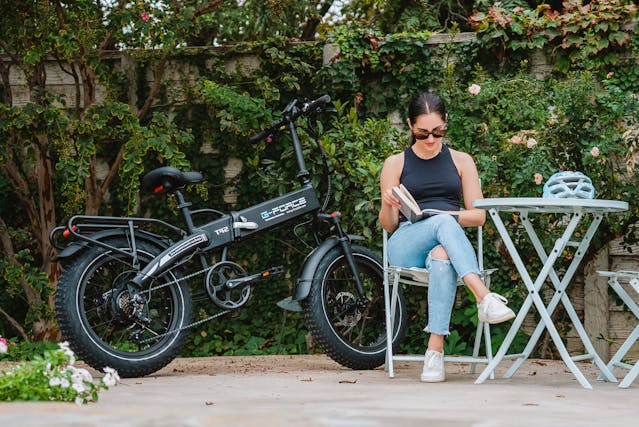
The second category (and the focus of this article) is the electric mountain bike, or e-MTB for short.
These feature motors integrated into the bottom bracket (where the cranks attach), maintaining proper weight distribution for off-road handling.
More importantly, they’re designed as pedal-assist systems, meaning the motor only engages when you’re actively pedaling.
No pedaling effort, no motor assistance.
In Europe, where e-MTBs achieved earlier mainstream acceptance, regulations limit these bikes to 250W motors and a maximum assisted speed of 25 km/h (15.5 mph).
Beyond that speed, you’re on your own – just human power turning the pedals.
This distinction is crucial because it addresses the fundamental misconception about e-MTBs. They’re not motorized shortcuts – they’re legitimate bicycles that amplify your effort rather than replace it.
Hope this clarifies it.
The Encounter That Changed Everything for Me
Now…
My journey toward e-MTB enlightenment began during a routine ride on the island of Koh Samui in Thailand.
I was cruising along, hitting my usual daily target of 37-50 miles (60-80 kilometers), when a guy in his early thirties on a hybrid bike caught up to me.
With a thick French accent, he asked if he could join.
He explained he was visiting Samui as part of a longer trip through Thailand and had borrowed a bike from his hotel. Since riding alone was boring, he wanted company.
I welcomed François, and we rode together. He turned out to be an interesting character – both a cycling enthusiast and motorcyclist.
When he mentioned having an electric bike back home that he thoroughly enjoyed, I couldn’t resist teasing him, implying e-bikes are artificial substitutes for the real thing.
His response was passionate and eye-opening:
“Listen, you’re not that old to be stuck with outdated thinking. Most cyclists talking trash about e-bikes simply don’t understand what they actually are today.
There are two categories – commuter e-bikes and electric mountain bikes.
The mountain versions use mid-drive motors that keep the center of gravity low and maintain normal weight distribution. The motor only works as an assistant – it doesn’t engage unless you’re pedaling.
What if I told you the motor isn’t about reducing effort? What if it’s actually a tool for expanding possibilities?
Think about gears on a bike. Old-school purists probably once claimed bikes with gears were for wimps – that real riders used singlespeeds. But you use gears, right?
Everyone claims you use less energy on an e-bike, but my knees are still trembling after my rides.
Here’s what happens: I push myself hard climbing a hill on a regular mountain bike at 10 km/h (6 mi/hr), navigating rocks and roots, working at about 85% of my maximum.
On my e-bike, I attack the same climb still at 85% effort, but at 18 or even 20 km/h (11-12 mi/hr)! The bike’s bouncing over obstacles, and I’m fighting to stay focused.
The motor doesn’t let you cruise up steep hills barely sweating. You still push your limits, but your reward is speed. Pure adrenaline!
On a regular MTB, you only get that rush on descents. On an e-bike, your mind is blown the entire time.
I’d even say climbing becomes scarier than descending.
I actually get more tired on my e-bike because you’re constantly engaged, always focused. If you want to push yourself, the energy expenditure is similar, but the experience is completely different.
As for battery life – an e-MTB is a specialized tool for fun riding.
I live near the Alpine foothills. I drive to the trails, then ride my e-bike. The battery gives me about two hours of intense mountain riding, which is plenty for me. I couldn’t handle more physically anyway.”
I couldn’t fully convey François’ enthusiasm, but his message was clear:
E-MTBs offered a fundamentally different mountain biking experience – not an easier version of the same activity, but something new entirely.
For those curious, he uses Haibike XDURO AllMtn Pro.
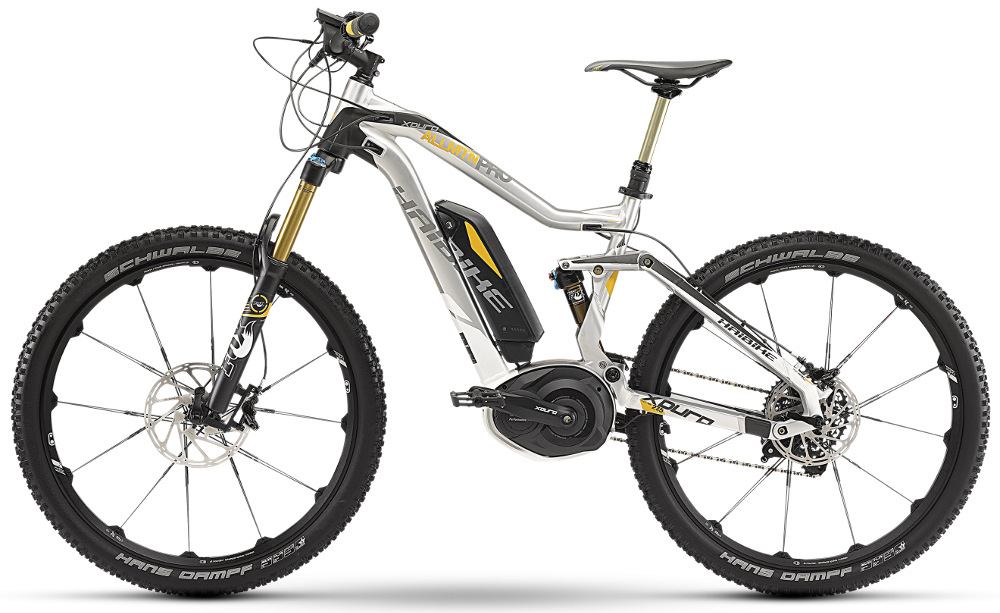
Next.
A Second Opinion From a Die-Hard Traditionalist
While François’ explanation left a strong impression, what happened next truly shattered my preconceptions.
After returning home and researching e-MTBs, I found out that my older friend Mike was now an e-bike owner.
This shocked me because I’ve never known anyone more practical, conservative, and resistant to cycling trends.
Mike wouldn’t spend a penny on anything unnecessary – yet here he was, the proud owner of a premium factory-built e-MTB costing thousands of dollars.
I immediately reached out to learn what had converted this die-hard traditionalist.
His explanation was revealing:
“The truth is, at 50-something, I still love regular trail riding, but my body can’t sustain the intensity it once could.
I started monitoring my heart rate and being more careful about exertion, which meant slowing down – and getting less of that adrenaline rush that makes mountain biking fun.
That’s when I considered electric assistance. The e-bike gives me exactly what I wanted – speed on challenging terrain.
You still have to pedal constantly, but the motor help lets you tackle climbs and technical sections faster with less strain.
Essentially, I get sensations that only a much stronger cyclist could experience. I use the same energy as on a regular bike but get much more enjoyment in return.”
Now…
He acknowledged the weight (about 44-48 pounds) was the main drawback, especially when carrying the bike up to his fifth-floor apartment.
However, according to him, when riding, as soon as the assist kicks in, he completely forgets about the weight.
When I asked about battery life, Mike explained:
“On my recent ride, I covered 52 miles (83 kilometers), more than half on dirt and forest trails, and still had about 12 miles (20 kilometers) of range left. For regular off-road riding, the battery is more than adequate.”
Most surprising was that he hadn’t sold his regular mountain bike.
He still uses his MTB for multi-day trips or club rides with beginners, whereas the e-bike is for personal enjoyment – for speed and thrills off-road.
Bottom line is this:
E-bikes are particularly valuable for people who love cycling but face age-related limitations or health issues that prevent them from fully enjoying regular bikes.
Why Electric Mountain Bikes Aren’t “Cheating”
I’ll be honest…
After these conversations, I had to admit I’d been operating with outdated information and biases.
I hadn’t realized that e-MTBs could transform the riding experience rather than simply making it easier.
Our typical objection to e-bikes is that motor assistance feels dishonest – you get “free” speed without earning it.
But as François pointed out, gears also make cycling easier.
- Is that cheating?
- What about lightweight carbon frames?
- Sophisticated suspension that smooths rough terrain?
- Hydraulic disc brakes that provide superior stopping power?
The entire evolution of mountain biking over the past 30 years has been about making certain aspects of riding easier or more efficient.
Compare a high-end mountain bike from the early 1990s with today’s mid-range models.
On a modern bike, you’ll go faster and farther using the same energy – and have much more fun controlling the bike.
E-MTBs are simply the next step in this progression. Riders still push their limits, but get more enjoyment and capability in return.
After thoroughly researching what’s currently available, I can confidently say this isn’t just marketing hype that will fade in a couple of years.
Electric mountain bikes represent a significant evolution of the sport – motors have arrived in amateur mountain biking to stay.
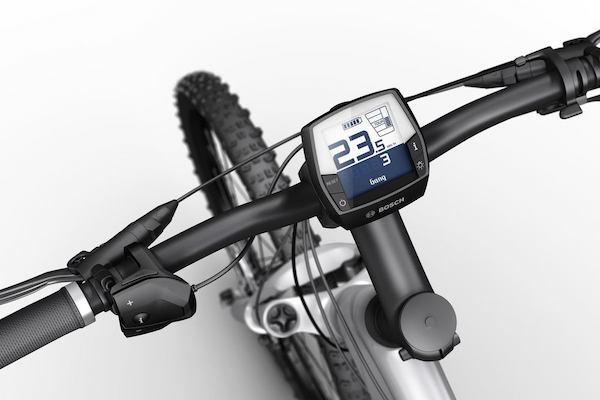
François told me about Alpine bike tours where people ride electric enduro full-suspension bikes with guides. Support vehicles meet them at checkpoints to swap batteries throughout the day.
This allows riders to cover up to 93 miles (or 150 kilometers) of challenging mountain trails – distances nearly impossible on regular bikes.
And these aren’t retirees but young, fit enduro enthusiasts who prefer this enhanced experience.
There’s also a potential health benefit:
Electric mountain bikes help smooth out peak cardiovascular loads.
Without motor assistance, climbs inevitably push your heart rate to near-maximum levels. Ask any cardiologist, and they’ll confirm that repeatedly driving your heart to near-maximum rates isn’t ideal, especially for casual riders.
The motor allows you to climb hills at lower heart rates, resulting in a smoother, more consistent effort curve without dangerous spikes.
Now, let’s talk about the technology itself.
The Technology Behind Modern E-MTBs
What makes modern e-MTBs effective is their specialized motor placement.
Unlike hub motors used in regular e-bikes, quality electric mountain bikes use mid-drive motors positioned in the bottom bracket area.
This design maintains optimal weight distribution, lowers the center of gravity for better handling, utilizes the bike’s gearing system for efficiency, and preserves natural bike geometry.
The most respected systems come from manufacturers like Bosch and Yamaha, with the Bosch Performance CX being particularly popular for its 75 Nm torque output (for comparison, a Honda Hornet 600 motorcycle produces 63 Nm of torque).
E-MTBs typically offer multiple assistance levels to match different riding conditions.
- ECO mode provides maximum efficiency for greatest range
- TOUR mode offers balanced performance for consistent riding
- SPORT mode delivers enhanced power for technical sections
- TURBO mode gives maximum assist for challenging climbs
Or you can disable the motor entirely.
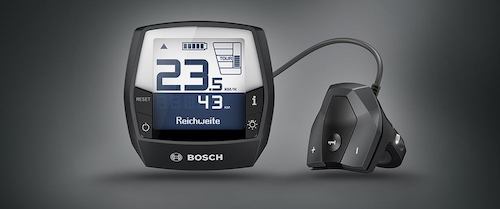
Modern e-MTBs come equipped with lithium batteries typically between 300–500Wh.
Real-world range varies significantly based on riding mode, terrain, rider weight, air temperature, and riding style.
Experienced riders report ranges of 19-25 mi/30–40 km in steep, technical terrain using higher assist modes; 52-60 mi/80–100 km on mixed terrain with moderate assist; and up to 93 miles/150 km on flat paths using minimal assistance.
Potential Drawbacks to Consider
Now…
Despite my growing enthusiasm, several factors were kinda stopping me.
The most significant drawback is weight – most models weigh between 44–48 pounds, considerably heavier than traditional mountain bikes at 24–33 pounds.
This affects handling on technical descents and makes riding without motor assistance more challenging.
Battery range remains a concern for longer adventures.
Energy consumption varies dramatically based on assistance level, rider weight, elevation changes, and surface conditions. Given that batteries naturally degrade over time, even a 10-20% capacity loss would make longer rides stressful.
A spare battery helps but costs around $770 and adds 5.5 pounds to your pack.
Most airplanes also prohibit flying with e-bikes, limiting potential destinations to places reachable by land transportation.
This makes sense from a safety perspective – large-capacity lithium batteries pose legitimate risks, especially considering many e-bikes use non-standardized batteries.
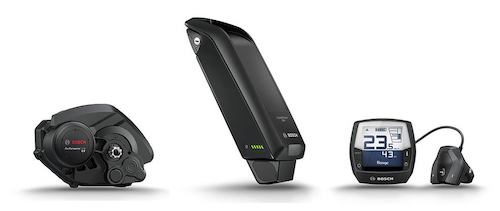
And then there’s the cost.
Electric components add roughly $1,650-2,200 to a bike’s price.
Entry-level e-MTBs start around $2,200, decent models with better components begin at $3,300, and premium offerings start at $4,400.
These prices put quality e-MTBs out of reach for many cyclists.
Who Should Consider an E-MTB?
Electric mountain bikes offer compelling benefits for several types of riders.
Specifically:
1) Experienced cyclists facing age-related performance decline who want to maintain the thrill of technical riding despite reduced physical capacity.
2) Riders recovering from injuries or managing chronic conditions, particularly those with knee issues.
3) Adventure seekers wanting to explore deeper into wilderness areas that would be inaccessible without assistance.
4) Mixed-ability groups and families where riders of different fitness levels want to enjoy trails together.
5) Traditional cyclists seeking the unique challenge of high-speed climbing on technical terrain.
Now, E-MTBs are less compelling if…
You’re a pure road cyclists (the speed limitation makes assistance less valuable), riders focused primarily on fitness goals rather than trail experience, those who frequently travel by air with their bikes, and cyclists on tight budgets.
The Future of E-MTB Design
Early e-MTBs suffered from awkward aesthetics with batteries often bolted onto frames as obvious afterthoughts. Modern designs have made tremendous progress in integration and appearance.
Newer models like the Cube Reaction SL 500 (with Bosch Performance CX) and specialized Turbo Levo HT 29 feature batteries elegantly integrated into the frame, creating cleaner lines and more balanced visual appeal.
Some designs are so well executed they’re barely distinguishable from traditional mountain bikes.
I mean have a look at these:
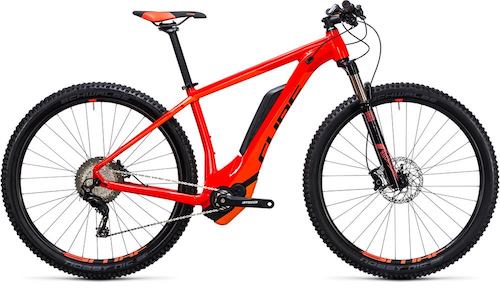

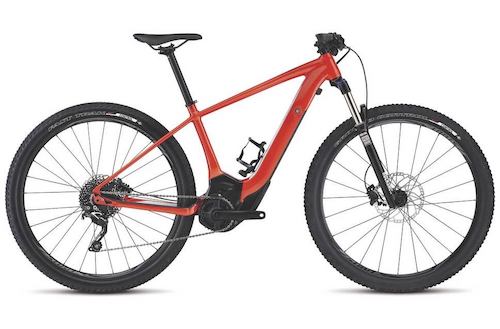
The e-MTB segment is evolving rapidly in two key directions.
First is weight reduction, with industry leaders already demonstrating prototype e-MTBs weighing less than 29 pounds.
Second is price accessibility – as production scales and competition increases, today’s premium pricing will gradually become more reasonable.
Major component manufacturers like Shimano have entered the e-MTB motor market, signaling mainstream acceptance and accelerating development.
This competition drives innovation and will eventually lower prices as the technology matures.
Electric Mountain Bikes: Frequently Asked Questions
Alright.
Below I’ve tried to compile a list of the commonly asked questions when it comes to this type of gear.
(Feel free to leave a comment in the comments if I haven’t covered something!)
Don’t e-MTBs make mountain biking too easy?
Not in the way most people think.
The motor doesn’t eliminate effort – it transforms how that effort translates into performance.
You’ll still exert yourself fully but experience higher speeds and different technical challenges.
In fact, many report being more exhausted after e-MTB rides due to the sustained intensity and focus required.
Should e-MTBs replace traditional mountain bikes?
Most cycling enthusiasts view e-MTBs as complementary rather than replacements.
Many keep both types for different scenarios.
E-MTBs excel at intense technical adventures, while traditional bikes may be better for fitness-focused riding, bikepacking, or situations where battery limitations would be problematic.
How far can you ride on a single charge?
It varies tremendously based on terrain, assist mode, and riding style.
In challenging mountain terrain using higher assist modes, expect 19-25 miles (or 30–40 km).
On mixed terrain with moderate assist, 52-60 mi (or 80–100 km) is realistic. On flatter routes with minimal assist, ranges up to 93 miles (or 150 km) are possible.
Many riders carry a spare battery for longer adventures.
By the way, you can use this online calculator to calculate the range for your next e-bike tour.
What happens when the battery dies?
The bike functions like a normal mountain bike, just heavier. Riders report maintaining 10-11 mi/h (or 16-18 km/h) on flat terrain without assistance.
While not ideal, it’s perfectly manageable to return home if you miscalculate your range.
Are e-MTBs allowed on all trails?
Regulations vary by location.
In Europe, Pedelec-class E-MTBs (max 250W, 16 mi/h or 25 km/h assist) are generally permitted on most trails.
More powerful models (S-Pedelecs) face stricter regulations. Always check local rules before riding.
How loud is the motor?
Modern E-MTB motors produce a soft buzzing sound that increases with pedaling cadence. The sound is noticeable but not disruptive to the riding experience or to others on the trail.
Can you fly with an e-bike?
Most airlines prohibit transporting e-bikes due to battery safety concerns.
This limits E-MTB adventures to destinations reachable by land transportation or where rental options exist. This restriction is a significant limiting factor for destination riding.
Check out my other post about flying with an electric bike here.
How much does a good eMTB cost?
Not going to lie, quality electric mountain bikes are expensive.
Entry-level hardtails start around $3,300, while full-suspension models begin at $4,400.
Replacement batteries cost approximately $770.
The premium reflects both the sophisticated technology and the relatively new market segment.
I will create a separate article on the best electric mountain bikes, but in the meantime you can check out the options available on Amazon.
Do you need special maintenance for an E-MTB?
Factory-built E-MTBs from reputable manufacturers require similar maintenance to traditional mountain bikes for mechanical components.
The electrical systems are generally sealed and maintenance-free, though diagnostic checks may require dealer equipment.
Battery life expectancy is typically several years with proper care.
Is the 16 mi/h (25 km/h) assistance limit frustrating?
For technical off-road riding, 16 mi/hr is actually quite fast.
The limitation becomes noticeable primarily when riding with groups on flat sections where traditional bikes often exceed this speed.
Some cyclists use electronic devices to overcome this limitation, though this affects legal status in some regions.
A New Dimension of Mountain Biking
Without a doubt…
After diving deep into research and listening to passionate e-MTB riders, I’ve had to reconsider my biases.
Electric mountain bikes aren’t shortcuts or dilutions of “real” mountain biking – they’re an exciting evolution that opens new dimensions of off-road cycling.

The electric motor doesn’t replace the mountain biking experience; it transforms it into something different yet equally authentic.
Riders still push their physical limits but are rewarded with expanded capabilities, higher speeds on technical terrain, and access to adventures that might otherwise remain beyond reach.
While challenges persist – particularly regarding weight, cost, and range limitations – the trajectory is clear.
Just as suspension, disc brakes, and carbon fiber frames evolved from exotic innovations to standard features, electric assistance will likely become commonplace in mountain biking’s future.
Whether your next bike includes a motor is a personal decision based on your riding goals, physical condition, and terrain preferences.
But dismissing e-MTBs as “cheating” overlooks what they truly represent – not replacements for traditional mountain bikes, but a new category of off-road experience that many riders find genuinely exciting.
The e-MTB revolution isn’t coming, it’s already here.
And it’s far more thrilling than skeptics realize.
Now, I’d love to hear from YOU:
- What are your thoughts on electric mountain bikes?
- Do you agree or disagree with me here?
Share your thoughts and experiences in the comments below!

Be the first to comment